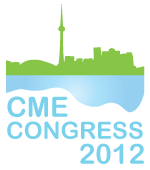Tom McKeithen (Healthcare Performance Consulting); Mary Ales (Interstate Postgraduate Medical Association); Floyd Pennington (Amercan Society of Transplantation); Chris Larrison (Healthcare Performance Consulting); Amy Holthusen (Interstate Postgraduate Medical Association); Mikayla Bartlett (Amercan Urological Association); Sterling North (American Urological Association); Adele Cohen (Physicians Institute for Excellence in Medicine)
Funding Sources
Pfizer Medical Education Group
Purpose
To identify educational strategies to close the gaps in care provided solid organ transplant patients.
Methods
The needs assessment methodology reflects of practice settings in which care is provided. It includes a review of evidence-based literature, observational studies, guidelines, consensus statements, and research initiatives surrounding the care of the kidney transplant patient, as well as practice gaps and barriers to providing optimal patient care. Data were collected through interviews with stakeholders, Change Readiness Inventory® (CRI), and Practice Assessment Tool (PAT).
Results
Four major educational needs emerged: (1) Managing complex drug regimens including drug-drug interactions; (2) Screening, monitoring and managing multiple co-morbidities that often get worse after transplant; (3) Educating and motivating patients on adherence issues; and (4) access to concise clinical information to support decision-making. Real and perceived needs and barriers related to these themes were quantified using the CRI and PAT. Additionally, learning preferences of healthcare professionals caring for kidney transplant patients were identified and quantified.
Applications
Results of the assessment will be used to select and design educational resources for healthcare professionals providing long term care for the kidney transplant patient.
Future Directions
Additional partnerships will be developed to utilize the comprehensive assessment methods to identify educational needs for other healthcare professionals.
Declaration
Authors have no financial realtionships with any commercial entities apart from the grant funding that could be construed as a conflict of interest.





